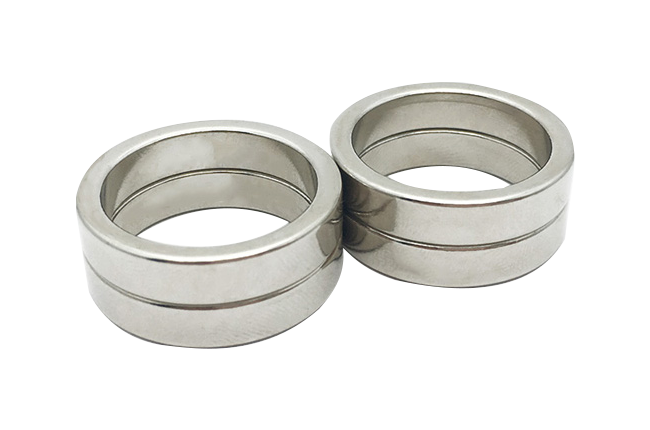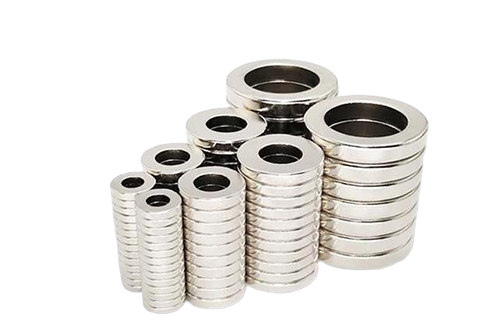

NdFeB (neodymium-iron-boron) magnets require protective coatings due to their inherent susceptibility to corrosion. The iron content in these magnets makes them vulnerable to oxidation when exposed to moisture or harsh environments. Various coating technologies have been developed to address this limitation while maintaining magnetic performance.
Common Coating Types
1. Nickel-Based Coatings
Nickel-Copper-Nickel (Ni-Cu-Ni) Triple Layer
Most widely used protective system
Typical thickness: 15-25μm
Provides excellent corrosion resistance
Suitable for most industrial applications
Electroless Nickel Plating
Uniform deposition without electrical current
Better coverage on complex geometries
Contains 4-12% phosphorus for enhanced protection

2. Zinc Coatings
Electroplated Zinc
Cost-effective solution
Thinner than nickel coatings (typically 5-15μm)
Suitable for dry environments
Often supplemented with chromate passivation
Zinc-Aluminum Composite
Improved corrosion resistance
Better mechanical durability
Used in automotive applications
3. Epoxy Coatings
Spray or Dip Application
Thickness ranges from 20-50μm
Excellent chemical resistance
Available in various colors
Preferred for medical and food-grade applications
Powder Coating
Thicker protective layer (50-100μm)
Enhanced mechanical protection
Used in harsh industrial environments
4. Specialized Coatings
Parylene Polymer
Ultra-thin conformal coating (5-20μm)
Superior moisture barrier
Used in precision electronic applications
Physical Vapor Deposition (PVD)
Thin, hard ceramic coatings
Excellent wear resistance
Maintains tight dimensional tolerances
Coating Selection Criteria
Key factors influencing coating choice include:
Environmental conditions (humidity, temperature, chemical exposure)
Mechanical requirements (abrasion resistance, impact tolerance)
Electrical properties (conductivity requirements)
Dimensional constraints (coating thickness limitations)
Regulatory compliance (RoHS, REACH, FDA)
Coating Performance Metrics
Standard testing methods evaluate:
Salt spray resistance (ASTM B117)
Humidity testing (85°C/85% RH)
Adhesion strength (cross-hatch or tape tests)
Temperature cycling performance
Chemical resistance testing
Application-Specific Solutions
Different industries require tailored coating approaches:
Automotive: Zinc-nickel or epoxy coatings for underhood applications
Medical: Parylene or FDA-approved epoxy coatings
Consumer Electronics: Thin nickel or gold plating
Industrial Motors: Thick epoxy or powder coatings
Maintenance Considerations
Proper handling of coated NdFeB magnets involves:
Avoiding mechanical damage to coatings
Preventing galvanic corrosion in assemblies
Storing in controlled environments when possible
Using appropriate cleaning methods

Conclusion
The coating technology for NdFeB magnets has evolved to meet diverse application requirements. From economical zinc plating to advanced PVD coatings, each solution offers distinct advantages for protecting these high-performance magnets. Understanding the relationship between coating properties and operational conditions enables optimal selection for specific technical applications. Continued advancements in surface treatment technologies further expand the usable environments for NdFeB magnets across industries.
Contact

We will contact you within 24 hours. ( WhatsApp/facebook:+86 15957855637)



